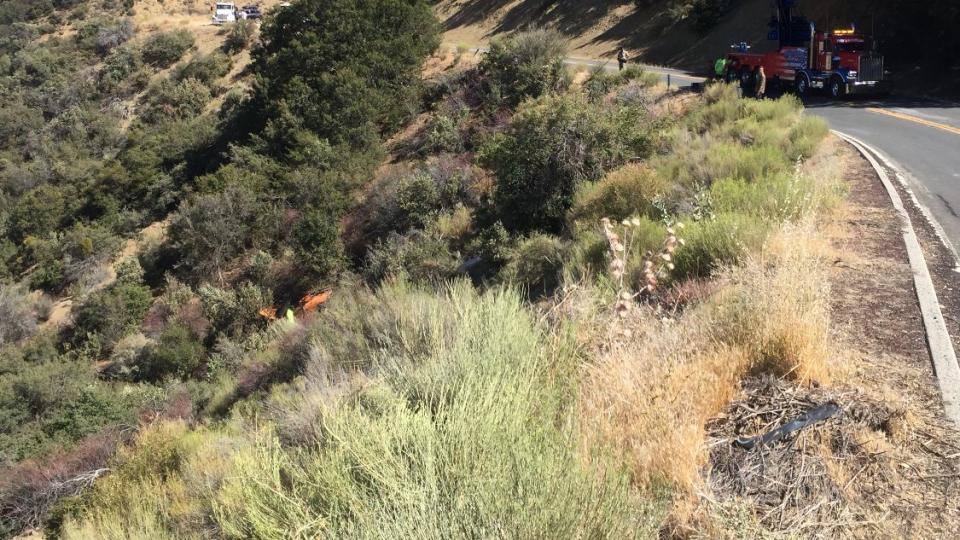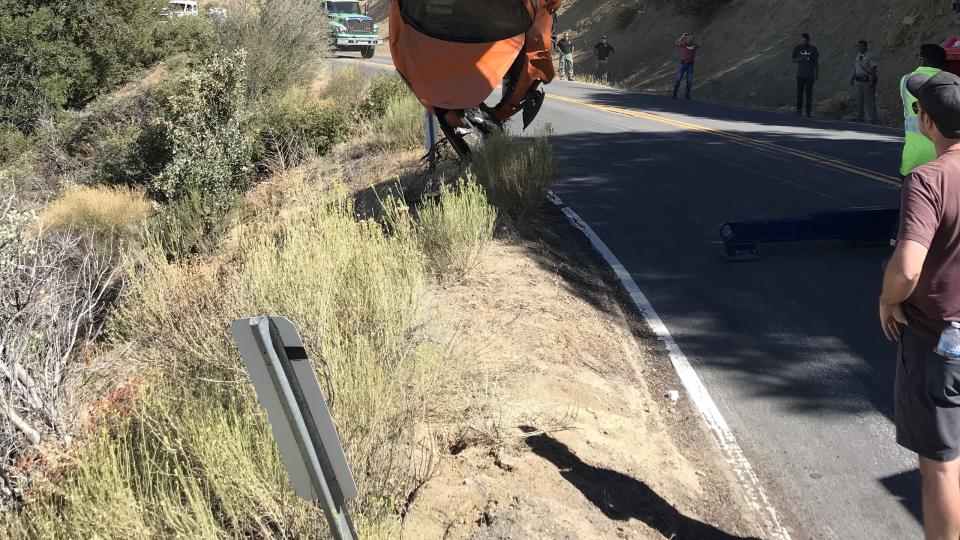Reliving My Horrific McLaren Crash Five Years Later

“I designed the carbon tub that saved your life,” Adam Thomson exclaimed. “I’m so, so happy to meet you.”
Thomson, then a top engineer for the supercar marque, and I were in the South of France for the launch of McLaren’s GT model, and Thomson had pieced together I was the passenger in a horrific 2018 crash wherein I’d been driven straight off a mountain in a McLaren 570S Spider, based on very specific safety cell queries I’d posed.
Overcome with emotion, I immediately embraced Thomson with a bear hug, and I’m pretty sure he welled up. I definitely did. “I can’t imagine how scary that must’ve been,” he said, wide-eyed. “Those crash numbers are absolutely staggering.”
Boy, are they. I worked with a NASA rocket scientist and an accident engineering firm to determine we’d left the road around 65 mph, spending three seconds airborne as we fell 80 feet down the mountain, coming to rest 300 feet from our launch point. We barrel-rolled twice, with an initial 50G impact, missing a spate of imposing trees and two three-foot wide drainage pipes.
That Car and Driver story omits all the experts somberly revealing had our trajectory been an inch or two different, I’d be dead.

Whenever I drive a mountain road now, the notion of that razor-thin margin flashes in my brain, brighter than the ESC light of the 570’s dash blinking seconds before we left the road. On the five-year anniversary of my brush with mortality, piloting a 2023 McLaren Artura on a similar sojourn from Los Angeles to Monterey’s Car Week unleashes a torrent of memories. I pass the same parking lot from which I originally departed, stop at the same gas station, grab breakfast from the same cafe; even the dawn fog blanketing Malibu is eerily similar.
While the exact route I’d previously driven—Ojai’s treacherous Route 33—was closed due to mudslides, Route 154 outside of Santa Barbara is an equally dynamic, mountainous alternative. Midway through those twisties, a precipitous drop to my left, sans guardrails, sparks light panic. Reflexively, my foot knocks against the Artura’s carbon fiber tub in the footwell; a calming safety blanket.

The aim for any safety cell is a reduction of joints, while increasing the amount of component integrations. “Every time you bolt something together, that joint is the weakest part of the system,” shares Andy Sylvester-Thorne, McLaren’s Head of Body-In-White Engineering. (Thomson has since left McLaren.). “Wherever you have single points of contact, we seek to eliminate those points and, accordingly, make the overall structure stiffer, stronger, and lighter. If our tub comprised, say, aluminum stampings, we’d have 50 different components which would require thousands of welds to create the whole. Each of those welds is a potential failure point.”
It’s an arduous process. In part, challenges surrounding remarkably safe composite material design are innumerable, particularly when compared to metal. “We understand the properties of metal in a crash. Metals largely behave the same in every crash simulation,” he says. “Carbon composite crash models are 100 times more complicated. You can tailor the fibers in any direction, to be stronger depending on where it’ll take the most load. The number of different opportunities we have to get right explodes. It requires a strong methodology in how we build those crash simulations.”

All of those hours in crash studies seem to have paid off in the evolution of the 570S into this Artura. “The Artura’s monocoque carbon tub is stiffer and stronger than the 570S,” Sylvester-Thorne explains.
Now in its third-generation, McLaren’s carbon monocoque demonstrates the engineers’ supreme understanding of how to manage stresses within the structure, eliminating unnecessary portions, in an unrelenting bid for lightness and rigidity.
The Artura’s carbon cell is heavier than the 570S’, owing to more incorporations of things like the Artura’s hybrid battery cell, and the rear B-pillars. That monocoque is the first to roll off McLaren’s proprietary production line, too; previous tubs hailed from Carbo Tech, an Austrian supplier.

 Yahoo Autos
Yahoo Autos 